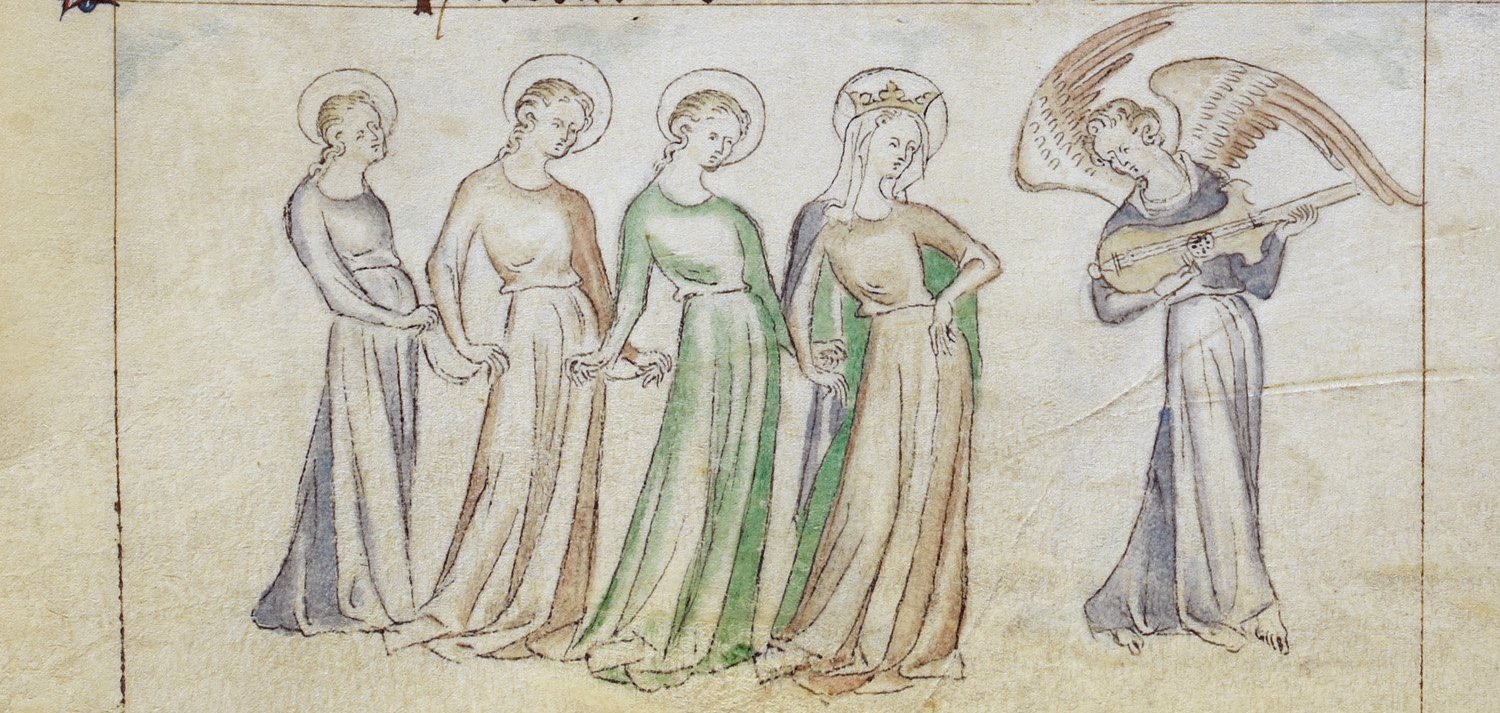
Alliteration was a foundational feature of medieval verse. Animals playing musical instruments are regularly seen in medieval art. The 14th century stone-carved musicians of Saint Mary’s Church, Cogges, Oxfordshire, delightfully bring these two elements together: there are nine instruments played by eight alliterative animals (one plays two), including a sheep playing a citole and a boar playing a bagpipe (above).
This article begins with examples of alliteration in medieval poetry (Beowulf, Sir Gawain and the Green Knight, Piers Plowman), songs (Foweles in þe frith, Doll thi ale), and the medieval mystery plays; followed by illustrations of animals playing music in medieval and renaissance art. That is the background for a brief history of Saint Mary’s Church, Cogges, and an explanation of its eight alliterative animals playing medieval music, with photographs of every carving and a video of each instrument being played.



